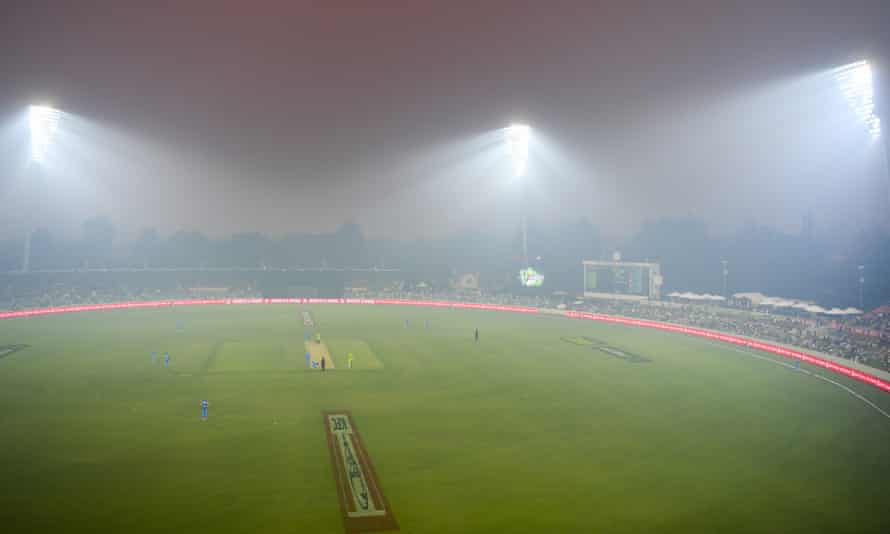Extract from The Guardian
New report warns sport will be ‘unplayable’ during increasingly severe summer heatwaves predicted for nation.

Last modified on Thu 25 Feb 2021 03.32 AEDT
The impact of extreme weather on sport, which has resulted in seasons being cut short and players hospitalised, has prompted Australian sport stars to call for greater action to combat the climate crisis.
The growing list of high-profile athletes to call for government action on climate change includes Australian cricket vice-captain Pat Cummins, former Wallabies captain David Pocock, Olympic swimmer and gold medallist Bronte Campbell, surfer Adrian Buchan and AFLW player Sharni Layton.
Former Socceroos captain Craig Foster told the Guardian the existential threat posed by climate change meant Australian athletes had an obligation to speak out.
“Sport needs to decide whether we are going to raise our collective voice for urgent climate action, as an influential social institution,” he said. “Sport is an international community of commonality and shared humanity, and this is precisely what climate action is about.”
Foster’s comments follow the release of a new report from the Climate Council warning Australia’s summer of sport was under threat from climate change, due to the increasing severity of heatwaves, drought and disasters.
The report detailed the extent to which climate change has already disrupted clubs and players from grassroots competitions to the elite level over the past decade.
When about 8m hectares of forests burned during last summer’s bushfires, capital cities along the east coast were blanketed in thick smoke that forced seasons to end early – a disaster for the $50bn professional sports industry.
Foster said: “Sport is not immune from the broader impacts of climate change, including more frequent extreme weather events, drought and bushfires, torrential rain events and, of course, higher temperatures, which we have already seen adversely affect summer sport, in particular the Australian Open tennis, A-League and W-League and Big Bash and Test cricket in highly publicised examples.”
In another high-profile incident, England cricket captain Joe Root was rushed to hospital on a 41.9C day during the Sydney Ashes series in January 2018.
At the Australian Open tennis tournament in Melbourne in 2014, about 1,000 spectators were treated for heat exhaustion when temperatures rose above 40C.
In some cases, extreme weather has ended careers. Australian netballer Amy Steel was forced to end her 10-year career in 2016 after suffering heat stroke during an indoor pre-season game.
“I was physically the fittest and strongest I had ever been,” she said. “I never could have imagined this would be the last game I’d play, that it would end my netball career.
“That incident left me with lifelong health issues, including chronic inflammation and fatigue. If this could happen to me – an elite athlete – then what are the risks for community sporting clubs, as climate change makes heatwaves longer, hotter and more frequent?”
Dr Martin Rice, lead author of the Climate Council report, said no one was immune from the impact of climate change in Australia.
At the community level, he said, local clubs were forced to cut their seasons short during the millennium drought, were hit with higher insurance premiums, and players suffered more injuries as they tried to play on hard, dry turf.
“Sport is obviously an institution here in Australia,” Rice said. “Sports stars are revered and the clubs are as well. Millions of Australians play or watch sport on the weekend. It’s a huge part of our life, part of the social fabric of rural and regional communities, yet climate disruption is playing havoc on sport.
“And it’s expected to get worse. By 2040, heatwaves in Melbourne and Sydney are expected to get as high as 50C degrees. You can’t play in those conditions. We’ve already seen elite tennis players keeling over at high 30s, low 40s. You can imagine what that would be like. Ten degrees hotter is unplayable.”
Foster said sporting bodies had a role to play in combatting climate change.
“Sport is now being asked whether and how it will adapt, through a commitment to net-zero greenhouse gas emissions, renewable energy to power infrastructure and events, more sustainable waste management and different methods of travel not dependent on fossil fuels.”
Rice said most major sporting organisations were already aware of the need to mitigate the effects of climate change, with many maintaining heat policies to ensure the safety of their players during extreme events.
What was now needed was for sport clubs and organisations to lead the change, not just in advocating for government action but in thinking about how they design and run their facilities.
“Essentially community and professional sport can be part of addressing climate change,” Rice said. “Athletes can be a driving force for change. Athletes and clubs are revered, they’re respected. Clubs themselves can lead the way by cutting emissions in how they design and run their grounds through things like solar.
“Sporting organisations have a responsibility to build resilience and prepare for increasingly destructive weather. These sporting organisations have a responsibility to protect their athletes, it’s a duty of care and to ensure the sports are conducive to an active life and health for all participants.
“Sport can really be part of the solution.”
No comments:
Post a Comment